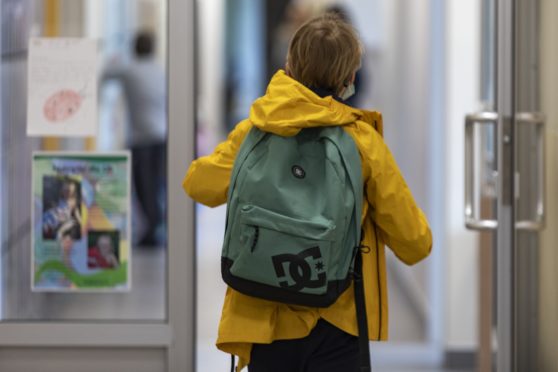
Clarity over how the next academic year will work is the most important factor for teachers when reopening schools, a survey has found.
A poll of more than 26,000 members of the EIS teaching union gauged their views on the coronavirus outbreak’s effect on education.
When asked what needs to be done to instil confidence in the next academic year, 93% of respondents said more clarity is needed over how teaching will be delivered to pupils.
According to the results of the survey, 76.8% of teachers also said there would need to be adequate time given to ensure the part-time, blended model of teaching could be created, while 63.2% said it was critical to receive support from their individual school or local authority.
The approach for exiting lockdown was detailed by First Minister Nicola Sturgeon last week, with the first phase due to start on Thursday – provided the virus continues to be suppressed in Scotland.
The “route map” also set a preliminary date of August 11 for the opening of schools, with teachers operating a part-time teaching model which will see children spend around half of their time in school and the other in class.
The survey was conducted before the route map was made public, between May 12 and May 19, meaning teachers were not aware that they would be cleared to return to work from June to allow them to prepare for August 11.
Larry Flanagan, the general secretary of EIS, said: “There is much to be encouraged about in these findings, including good provision in Hub schools for the children of key workers and a strong commitment to supporting young people and their families in home learning.
“There are, however, also some significant causes for concern such as the real challenge of maintaining social distancing in a school environment and how best to ensure that more vulnerable young people and those experiencing disadvantage associated with poverty can receive appropriate support during this crisis.
“Our survey findings identify many challenges that education will continue to face for months, if not years, to come.”
Nearly two thirds of the teachers surveyed, 61.3%, reported that low pupil participation was a barrier to delivering home learning, a further 36.9% said there had been trouble in delivering practical pieces of coursework, and 31.5% said low student attendance was proving to be an issue.
A spokeswoman for the Scottish Government said: “Our top priority is to keep pupils and staff safe.
“The Education Recovery Group has worked closely with local authorities, parents, teachers’ organisations and trades unions to arrive at an agreed approach to how we manage the safe reopening of schools.
“We will publish detailed guidance shortly on what physical distancing measures should be implemented.”

Enjoy the convenience of having The Sunday Post delivered as a digital ePaper straight to your smartphone, tablet or computer.
Subscribe for only £5.49 a month and enjoy all the benefits of the printed paper as a digital replica.
Subscribe